The quest for roots and identity
Animistic Beliefs and Jeisson Drenth about their new audiovisual live show Thức Tỉnh
28 March 2024
by Eelco Couvreur
Musicians Linh Luu and Mar Lalihatu – together Animistic Beliefs – and multidisciplinary artist Jeisson Drenth grew up between two cultures: the Dutch and the culture of their parents' and ancestors' country. They draw inspiration from the progressive understanding of personal histories marked by migration, with the new audiovisual show Thức Tỉnh (Awaken) as a preliminary result.
Linh, Mar and Jeisson, in collaboration with the Muziekgebouw Production House, are tinkering with the performance inspired by their search for origins and identity. Increasingly, they embrace their Vietnamese-Chinese, Moluccan and Colombian cultures that, growing up in the Netherlands, never came to the fore. Embracing those cultures as yet feels like a new beginning.
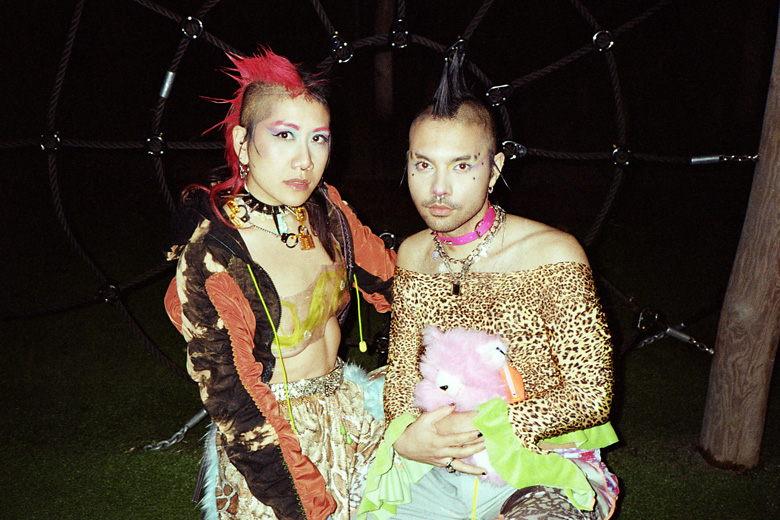
Foto: Kenneth Owens
For Animistic Beliefs, Thức Tỉnh is a further departure from the Western club music with which they took the international scene by storm a few years ago. With Jeisson as their artistic partner, they explore different art forms. Thức Tỉnh consists of four different scenes of about 15 minutes, embedded in the music of Animistic Beliefs and the visual ideas of Drenth. Electronic music continues to be the glue that holds it all together, but the new show also features traditional acoustic instruments, clothing, dance, poetry, and even a shadow play. ‘A live show gets interesting when you explore different avenues and don’t just limit yourself to music and visuals’, says Jeisson. ‘With clothes or text, you can explore multiple emotions. You can dance, but we also have something to say, want to draw attention to something.’ Linh: ‘In a previous show we included a similar kind of break, an unexpected moment. It’s not very complicated what happens, you suddenly see and hear poetry. It’s a sensitive break and then right away, bang, we carry on with what we were doing. You then bring the emotion of that moment into the rest of the show. And dancing allows those feelings to be expressed and gives them a place to exist.’
Under the wings of the Muziekgebouw
The trio has been developing Thức Tỉnh under the Muziekgebouw Productiehuis label since 2023. The idea: to give a new generation of musicians and makers, who have the potential to make a difference internationally, the opportunity to develop new artistic projects. ‘For us, it simply means that we are being given the time to actually make productions. We no longer have to say ‘yes’ to everything in terms of performing shows. People often don’t realize it, but without these kinds of collaborations it’s nearly impossible for artists like us to work on a project for an extended period. The materials we need are expensive. A smoke machine, raw materials to make masks with, things like that. But perhaps the most important thing is time. The peace of mind it gives you to be able to do research and experiment without having to worry right away about whether it will be a success.’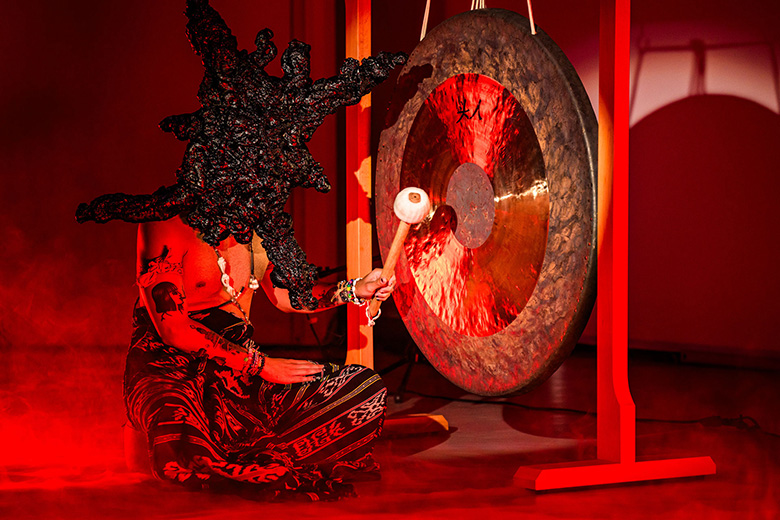
Beeld: Dammes Kieft
Explicit and physical
Jeisson: ‘I draw inspiration from festivals that are at the intersection of art and technology. Concerts, dance, visual art and performance art. At the festivals I love, there’s also a moment of catharsis on the dance floor. At live shows with electronic music, I often miss the body and voice, but especially the message. What’s the work about? What is it communicating? I don’t want our show to be safe and abstract, or meaningless due to a lack of language. Rather, I prefer to make explicit and physical work. From there, the idea was born to capture this all in one evening with Animistic Beliefs. An intro with electronic music, an acoustic part, a part that involves dancing and space for text and poetry and, at the end, a blaring finale. Perhaps it will take other forms in the future. For now, Thức Tỉnh consists of a twenty-minute club section and a forty-minute performance section.’
Showing culture
Animistic Beliefs and Drenth make art that is about the experience of forced and often traumatic migration. They compare the culture they grew up in to the culture of their parents’ country of origin and search for new ways to relate to that country. They play with the (musical) language of the country of their ancestors. ‘That polyphony is very important to me,’ says Jeisson. ‘In the show, you hear Spanish, Vietnamese and Malay-Ambonese, with sometimes an English translation that always preserves the meaning of the native language.’ Those identities are clearly the catalyst for this kind of art and music. Descendants of colonised people are increasingly demanding a place on the stage, and the dominant image that was dictated by white creators for years is shifting. ‘I feel the need to show my culture,’ says Mar. ‘Which is not just limited to music. It’s also another side of ourselves that we are showing.’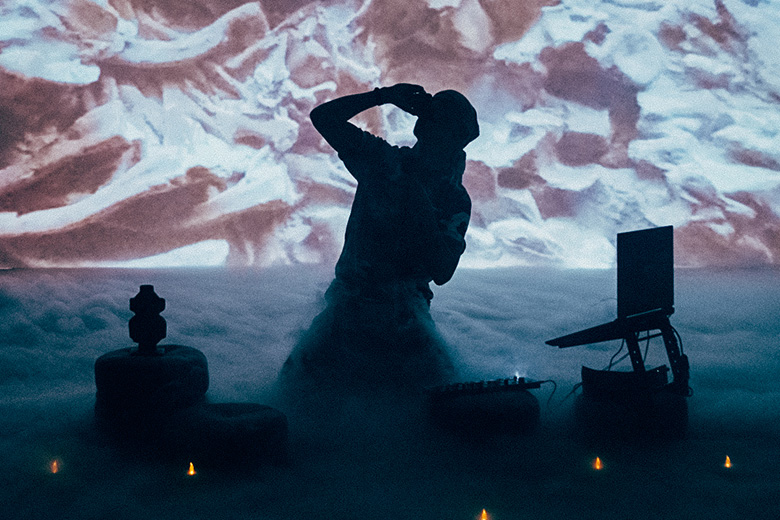
Beeld: Dammes Kieft
The heartbeat of the Moluccas
Animistic Beliefs’ latest album, Merdeka, which means freedom in Indonesian, features samples of traditional Vietnamese and Moluccan instruments. Some of those instruments are played live on stage during Thức Tỉnh, others are sampled. Mar tells the story of the tifa, a goblet drum also known as ‘the heartbeat of the Moluccas’, according to Wikipedia. In local rural villages, the tifa drum is what the trumpet is in Europe. The rhythmic beats of the tifa drum echo throughout the village, calling the community together after someone has died, when a new mayor is inaugurated, and for wedding celebrations. ‘Together with my father, I made such a tifa as part of a workshop. Every week for three months we drove to Tiel together. You can hear the tifa on Merdeka (the song ‘Call of the Tahuri’) and in Thức Tỉnh.’
It is a way to keep history alive in the present. Not by reproducing it one-on-one, but by doing something new with it. Placing traditional sounds in a modern, electronic context. Jeisson does something similar in Thức Tỉnh with a pre-Columbian ceramic flute. ‘You can exhibit a flute like this in the World Museum, but then it can, unintentionally, have an effect of exclusion. Look, this culture is so different, we display its objects in a museum behind glass. You aestheticize objects, which in those kinds of cultures are often symbols of connection. I think it’s much more interesting to use it for something new. That’s what I’m trying to do with this show.’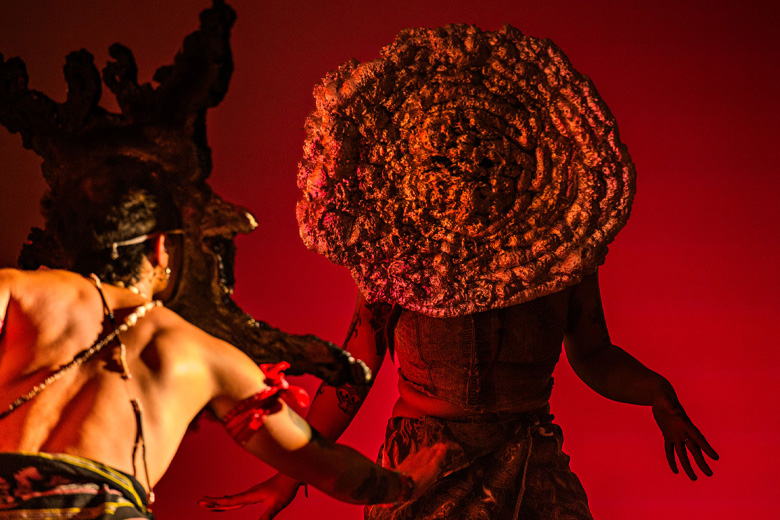
Beeld: Dammes Kieft
An Indonesian G
Mar made a study of the Indonesian scale and often uses it in compositions by Animistic Beliefs. ‘If you are used to western music, Indonesian scales sound a bit out of tune. An Indonesian G sounds just a tad higher than a Western G. For instance, in Indonesia every gamelan orchestra (orchestra with traditional percussion instruments, gongs, xylophones, flutes, ed.) sounds slightly different. In those orchestras, the instruments are tuned to each other. In the West, that doesn’t happen. Here, a C must always be a C. But for us, those Indonesian scales work very well because they give a completely different sound and feel. That inspires, also because it sounds familiar to me. It’s the music I heard as a child in my Moluccan family.’ Whereas Mar had and has the Moluccan community, Linh had to rely on Vietnamese cassette tapes. ‘Vietnamese music is quite westernised. When I was a kid, we used to listen to Vietnamese party and karaoke CDs. Now I play the sáo, a traditional bamboo flute. I recognise what Mar says. For many people, that music is difficult to understand because it has a coherence that sounds less logical from a Western point of view.’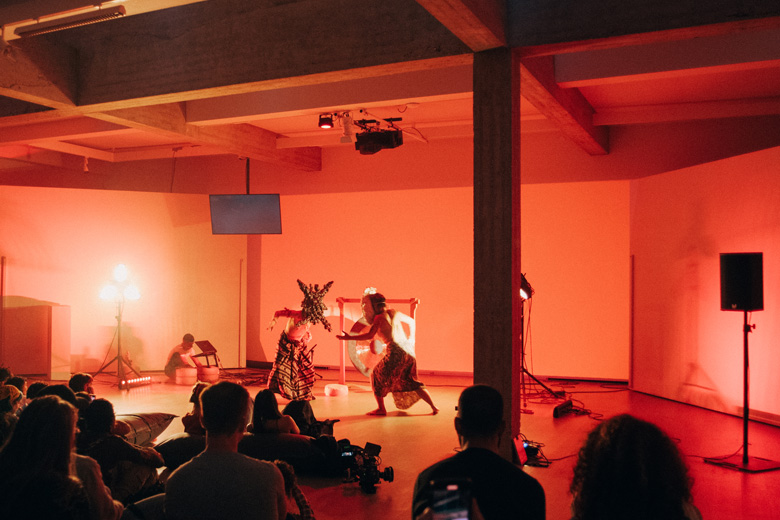
Beeld: Dammes Kieft
Queer persons of colour
That representation of different cultures also has an effect on the kind of audience that comes to shows like these. Jeisson: ‘The fact that all three of us are persons of colour and queer, that all three of us are from migrant backgrounds, means that you don’t have to explain certain sensitivities.’ Across the table, Linh nods in agreement. ‘It starts with a personal motivation to make something, but if others find comfort in that, that’s very cool.’ Linh: ‘We also often hear that it’s really cool to hear Vietnamese in a club context. At Mutek (festival in Montreal, ed.), someone told me that she only talks Vietnamese at home with her family. When she thought of Vietnamese music, she thought of traditional music, or contemporary pop music and rap. But electronic dance music? Well, why not?’
Thức Tỉnh by Animistic Beliefs and Jeisson Drenth will premiere at FIBER x The Rest is Noise on 10 January




